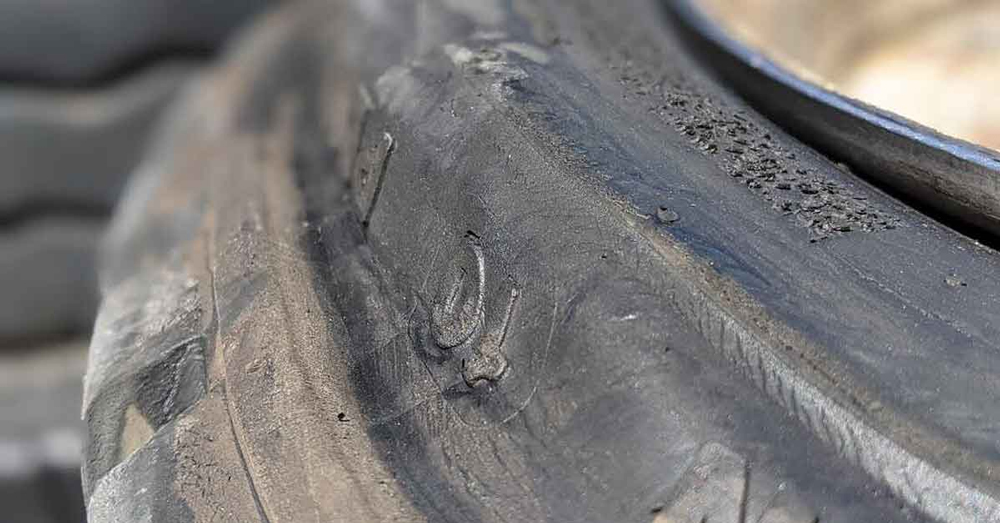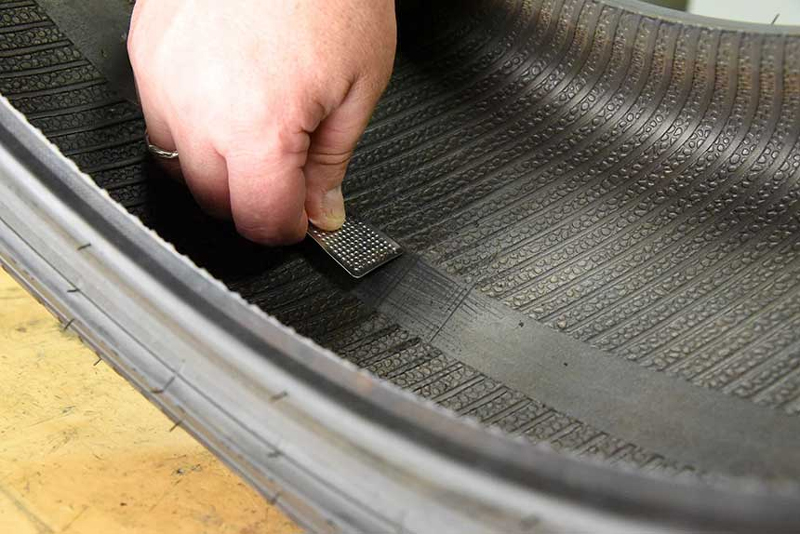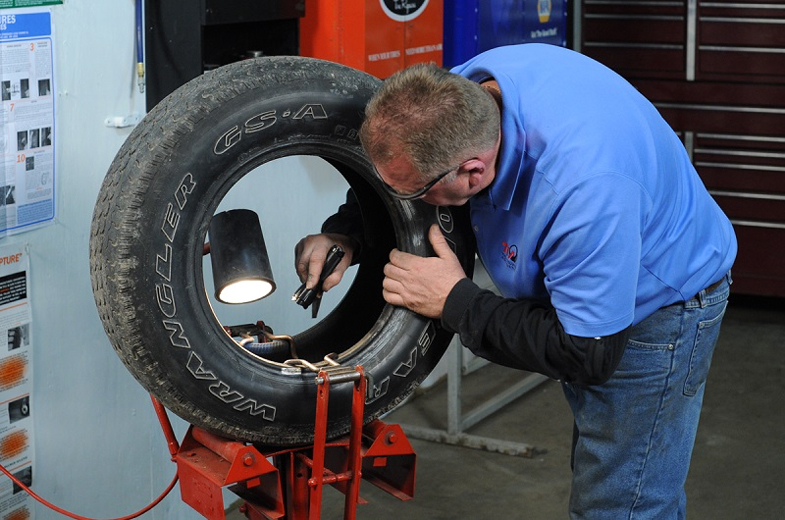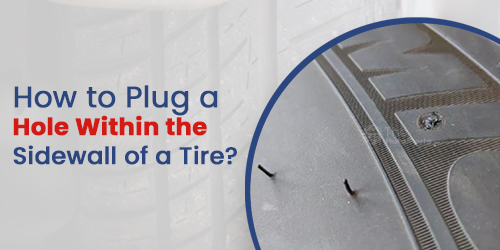No one wants to wait at the side of the road when a flat tire situation occurs. You just want to get back on the road as soon as possible by implementing repair options immediately. For example, you may have to drill a hole in the sidewall of the tire. This approach can be applied in certain cases, while in others, taking the car to a qualified technician is the best course of action. Let’s explore whether the patch option is better than the plug.
Can You Patch A Hole in Tire’s Sidewall?

In case there is a leak in the sidewall, try not to patch or plug it. Avoid getting into sidewall repair as it hampers the tire‘s integrity and leaves you stranded on the road. Traveling at high speeds or at high temperatures would put your safety at stake. The sidewall patch undergoes blowouts and leaks, so it must be taken to the reputed shops for repairs. Tire replacement would be the best way to resolve the issue, even if a small nail has got inside the tire. Ignoring a hole in the sidewall of a tire leads to tire accidents.
Punctures on the sidewall don’t occur as often as tread damage, so it’s better to get your tire repaired. However, before getting the tire repaired, it is important to inspect it by a professional mechanic.
What Exactly is a Tire Patch?

A tire patch is a rubber piece with an adhesive backing. The adhesive side is attached to the tire & creates a seal around the puncture. The punctures can be repaired with tire plugs. These plugs come with a strip of material coated with rubber compounds before being put inside the hole. The plug gets within the tire, thereby preventing the air exit from the tire.
A tire patch is reliable and robust compared to a tire plug. However, adding a tire patch demands more effort than the plug. You can take advantage of the hybridized tire plug that offers the best of both worlds.
What Causes a Hole in the Sidewall?
Below is the complete list of hole in the sidewall of the tire causes the driver must know about:
Impact
The impact is the primary reason that leads to sidewall damage. Sometimes running into the curb or scrapping against it or both of these issues lead to a puncture. Sometimes other impacts also lead to such issues. If you hit the sidewall too hard or debris built up leads to puncture.No, one wants to deal with a punctured tire, and this is why the vehicle must be inspected before taking any action.
Improper Infiltration
A properly inflated tire will hold the weight of the vehicle. An uninflated tire won’t have the air pressure that will hold the tire’s weight. An overinflated tire adds excess pressure on the sidewalls and leads to blowout puncture due to stress. Obtain the exact appropriate psi information mentioned on the driver’s side door jamb. If you’re unsure, get guidance from a local tire shop. Certain locations perform regular air pressure testing for their customers free of cost.
Old Age
Tires that are unused for a long time undergo tire dry rot. This happens when the car faces sunlight for a long-time. Sometimes the tires degrade due to old age, and once their age exceeds ten years, replacing them would be the best alternative. Once the tires become five years old, they must be inspected for their optimum performance from time to time.
Overloading
Car tires must be filled to a certain weight. You can get this information from the owner’s manual or door jamb present on the driver’s side. The more you exceed the weight the more pressure would be added to the tires. Weight leads to sidewall and tread breakdown followed by a puncture or a blowout.
Defects
Tires come with individual defects before they’re installed on the car. Therefore, it’s better to obtain information regarding the kind of tires you want to install in your car. Don’t invest in cheap tires while the budget is tight, and install tires that keep you safe on the road.
When It’s Time for a Tire Repair?

The tire puncture repair must fulfill certain criteria & patch or plug is installed after checking them. Some people go for puncture repair as a sidewall hole fix while it isn’t recommended in other cases.
1. Puncture takes place in the tread area, and it must be puncture must be 1″ from the sidewall to be safely repaired.
2. Ensure that there is no overlapping after a new puncture.
3. Puncture is ¼” or smaller in diameter. Anything larger than this cannot be repaired.
How Long Does Tire Puncture Repair Last?
The tire puncture repair lasts for about 25,000 miles. The seal must be between the material & tire tread for proper plug insertion. Patches stay for a long duration and are considered a reliable option. In a worst-case scenario, you can consider tire replacement and get the tires from reputed online car parts and accessories store ‘The Auto Parts Shop‘ and save money.
The Bottom Line
Implement both plug and patch to ensure complete protection.
